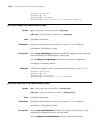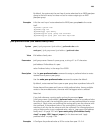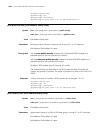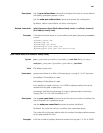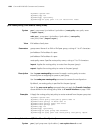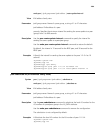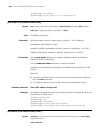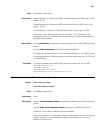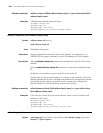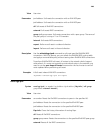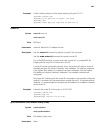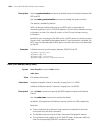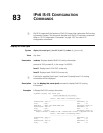
1262 CHAPTER 82: IPV6 BGP CONFIGURATION COMMANDS
Related commands: reflector cluster-id (IPv6 address family view) and peer reflect-client (IPv6
address family view).
Examples # Enable route reflection between clients.
<Sysname> system-view
[Sysname] bgp 100
[Sysname-bgp] ipv6-family
[Sysname-bgp-af-ipv6] reflect between-clients
reflector cluster-id (IPv6 address family view)
Syntax reflector cluster-id cluster-id
undo reflector cluster-id
View IPv6 address family view
Parameters cluster-id: Specifies the cluster ID of the route reflector, an integer from 1 to
4294967295 (the system translates it into an IPv4 address) or an IPv4 address.
Description Use the
reflector cluster-id command to configure the cluster ID of the route
reflector.
Use the
undo reflector cluster-id command to remove the configured cluster
ID.
By default, a route reflector uses its router ID as the cluster ID.
Usually, there is only one route reflector in a cluster, so the router ID of the route
reflector identifies the cluster. If multiple route reflectors are configured to improve
the stability of the network, you should use this command to configure the
identical cluster ID for all the reflectors to avoid routing loops.
Related commands: reflect between-clients (IPv6 address family view) and peer reflect-client
(IPv6 address family view).
Examples # Set 50 as the cluster ID for the route reflector, which is one of multiple route
reflectors in the cluster.
<Sysname> system-view
[Sysname] bgp 100
[Sysname-bgp] ipv6-family
[Sysname-bgp-af-ipv6] reflector cluster-id 50
refresh bgp ipv6
Syntax refresh bgp ipv6 { ipv4-address | ipv6-address | all | external | group group-name |
internal } { export | import }



